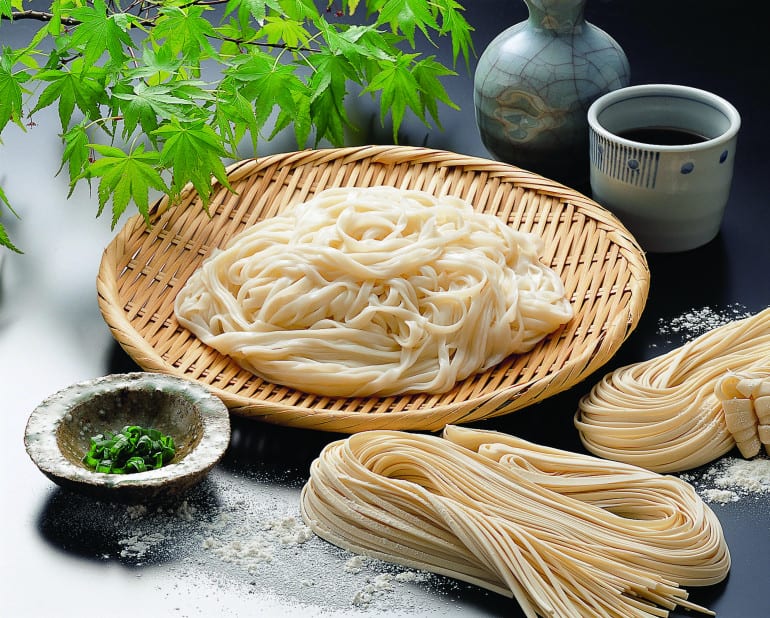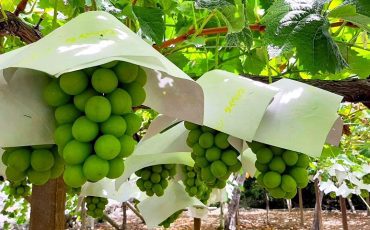- OISHII
- OISHII Wiki
- Dishes
- Inaniwa udon
OISHII Wiki
Dishes
Inaniwa udon
Unlike its prevalent sanuki counterpart, the inaniwa udon is a rarity, and its provenance stands in a class of its own. The inaniwa udon first made its mark on the Japanese culinary world back in 1655, with its smooth and glistening form matched by an exquisite flavour. It was so highly prized that during the Edo period (1603-1868), it was exclusively served as tribute to feudal lords in Akita Prefecture, where it is from. It gained widespread attention after the Meiji period (1868-1912), when it was presented to the Imperial Household Agency as a gift and won numerous awards.

Like the sanuki udon, the inaniwa udon has its local climate to thank for its uniqueness. Located in the northeast region of Tohoku, Akita Prefecture is surrounded by mountains and borders the Sea of Japan. Its harsh climate gives rise to high variations in temperatures across the seasons—bitterly cold in winter, hot and humid in summer. Temperatures fluctuate every day, and this is turn brings abundant harvests. Clean air and water further allows Akita to produce high quality wheat used in the making of inaniwa udon.
Since the noodle is painstakingly prepared by hand, each batch takes artisanal udon makers up to four days to create. Soft wheat flour, salt and water is first kneaded into a dough, flattened by two rods, stretched slightly like a thick rope, coiled and left to air-dry for a day. The next day, the dough is rolled flat, hand-stretched yet again into thinner noodles and left to rest across two steel bars, with udon masters ensuring that each strand does not touch another. This repeated process of stretching by hand, letting it age and rest on metal rods is repeated until the noodle reaches its desired length. Air bubbles formed during this process of hand-kneading and ageing is incorporated into the udon, and is the secret to the inaniwa udon’s chewiness.
The silky smooth and chewy inaniwa udon can be enjoyed hot, in a clear broth so that its subtle flavours do not overpower the delicate udon, or as a cold dish best taken in summer, dipped in soy, miso or sesame sauce.









